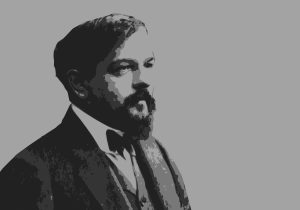Claude Debussy
Video Source | gullivior
Duration: 5:35
American pianist Eugene George Istomin, born in 1925, was known for his piano trio work with Isaac Stern and Leonard Rose. His performances included orchestral music with conductors like Eugene Ormandy and Bruno Walter. Istomin won the Leventritt award in 1943 and made his debuts with the Philadelphia Orchestra and the New York Philharmonic. His earliest public performances started at age 6, and he studied under Rudolf Serkin and Mieczysław Horszowski. In 1987, he recorded Debussy’s “Reflets dans l’eau” from “Images” Livre I, No. 1.
About the composer…

Debussy’s musical career took off with the premieres of his orchestral works, such as “Prelude to the Afternoon of a Faun” and “Nocturnes.” These pieces showcased his innovative use of harmony, texture, and form, earning him recognition as one of the leading figures in impressionist music. His compositions were characterized by their dreamlike qualities, rich harmonies, and unconventional use of tonality.
Some of Debussy’s most famous works include his piano suite “Clair de Lune,” the opera “Pelléas et Mélisande,” and his collection of solo piano pieces called “Images.” Throughout his career, he pushed the boundaries of traditional classical music and explored new avenues of expression. His influence can be seen in the works of many composers who followed him.
Claude Debussy’s contributions to classical music are significant and continue to be celebrated today. His innovative approach to composition, inspired by the Impressionist movement, has left a lasting impact on the genre. Debussy’s works remain a staple in the repertoire of both musicians and listeners who appreciate his unique style and groundbreaking contributions to the world of classical music.
